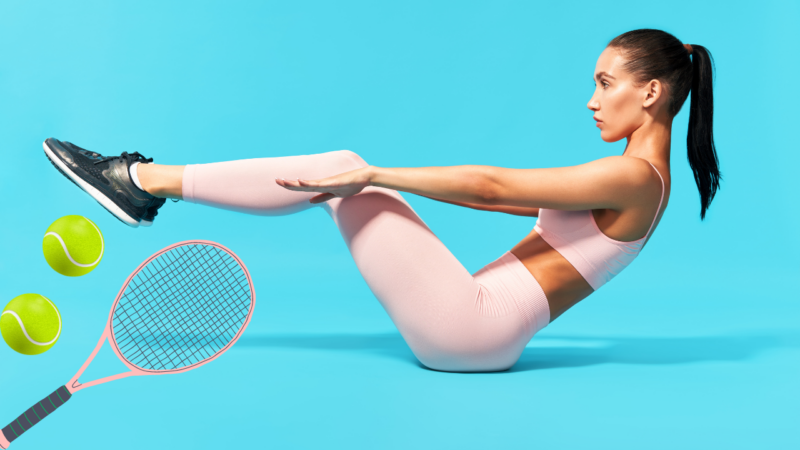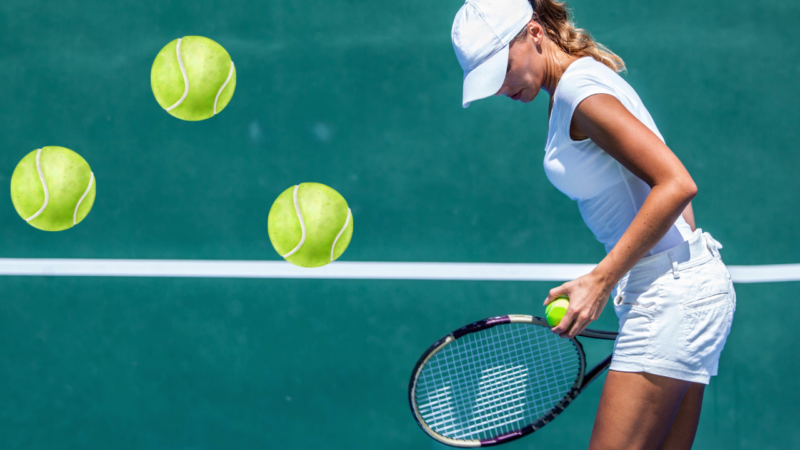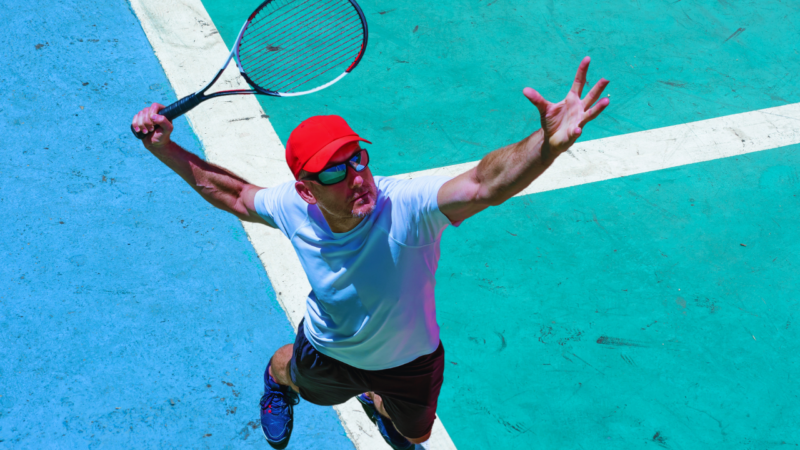Look, we’ve all seen it: someone with a tennis racquet wildly flailing on the court, and somehow, despite their passion, the ball barely makes it over the net—or it sails into the parking lot.
There’s a good chance they’re missing one major thing (besides tennis lessons): core strength. It’s the secret sauce that separates the casual weekend warrior from the player who can actually make things happen on the court. And yes, you need it even more than you think.
Let’s break it down. Core strength isn’t just about having a six-pack that looks good by the pool. It’s about the ability to generate power, maintain balance, and move like you’re not stuck in quicksand. And in tennis, it’s everything.
Why Core Strength Matters So Much

We often think of tennis as an arm and leg game. You swing with your arms, run with your legs—seems pretty straightforward, right? Wrong.
The truth is, the real magic happens in the middle. That soft middle you’ve been ignoring is actually where power and precision come from. And it requires you to work out. A lot.
With that said, if you’re looking to take your training up a notch and get serious about improving your game, ASFA offers specialized certifications that can help you build the knowledge and skills to maximize your core strength.
Now, let’s get to the nitty-gritty of why core strength is important for you in tennis.
Power
Ever wonder how pros send balls flying at Mach speed without their arms looking like they’re about to detach from their bodies? It’s not magic. It’s core strength. Your core is where the power originates.
Think about a forehand. That force doesn’t come from just flapping your arm like a bird in distress. It starts with your legs, flows through your hips, and then transfers through your core into your arm. If your core’s weak, guess what? All that lovely energy leaks out, and your shot lands flat.
Same thing with serves. If you want to rocket a ball down the line, your core better be ready to do some heavy lifting. Otherwise, you’re just giving your opponent a nice, slow lob to crush.
Balance

The difference between executing a graceful shot or looking like you’ve tripped overcomes down to how well your core holds things together.
In tennis, you’re constantly on the move: side to side, forward, back, sometimes all at once when things get wild. A strong core helps keep you stable during these chaotic moments. It ensures you’re not flopping around, desperately trying to regain your balance after every move.
When you can keep your balance, you hit cleaner shots. You’re also less likely to end up in the dreaded face-plant scenario when chasing down a tricky drop shot. And let’s be real—no one wants to be the person who ends up on a blooper reel.
Injury Prevention
Tennis is fun, sure, but it’s also brutal. Twisting, lunging, and smashing balls all over the place can do a number on your body, especially your back, hips, and shoulders. Without a solid core, you’re pretty much signing up for a long list of avoidable injuries.
Lower back pain, anyone? It’s practically a rite of passage for tennis players who neglect their core. But here’s the good news: a strong core helps distribute the forces across your entire body, taking the pressure off your joints and muscles. Translation? Fewer injuries, more court time, and less grimacing when you have to get out of bed the next day.
Agility
Let’s talk agility for a second. If you’ve ever played tennis, you know that your footwork has to be on point. There’s no walking, no standing around—just constant movement.
A strong core keeps your body in check as you move. It stabilizes your hips and pelvis, making it easier to explode in any direction. If your core’s weak, you’ll feel it: you’ll be slower, sloppier, and stuck catching your breath after every movement.
Consistency and Control
Power’s great, but without control, you’re just sending missiles into the back fence. A strong core isn’t just about launching the ball; it’s about guiding it.
When your core is engaged, your body stays aligned through each stroke, and you’re not flailing all over the place. This means your shots will actually land where you want them to.
Without core stability, your strokes get inconsistent, your accuracy goes out the window, and every rally becomes a gamble.
So, if you’re tired of watching your shots sail wide or long—or worse, into the net—stop blaming your racquet and start working on that core.
Core Strength
If you’re thinking, “Well, I guess I’ll just start doing crunches,” stop right there. Crunches alone won’t cut it. Your core isn’t just your abs. It’s your obliques, lower back, and even your hips.
And they all have to work together to give you that edge on the court. So, unless you want to become a master of ineffective workouts, do yourself a favor and add some functional exercises to your routine.
Core Exercises That Actually Matter
Here are a few exercises that are worth your time. Do them regularly, and your tennis game will thank you.
- Planks: I know, they suck. But they work. Planks build endurance and stability across your entire core, and if you do side planks, your obliques get some much-needed love.
- Russian Twists: These help with rotational strength, which, surprise, surprise, you need for almost every tennis shot. Just don’t go overboard and end up with a strained back.
- Medicine Ball Throws: If you want to mimic the rotational power of a forehand or serve, grab a medicine ball and start tossing it around. Not only does it improve core strength, but it’s also way more fun than crunches.
- Leg Raises: Your lower abs don’t get enough credit. Strengthening them helps stabilize your pelvis, which you’ll appreciate during those awkward, lunging shots.
- Cable Woodchoppers: Imagine swinging a racquet but with added resistance. This exercise targets the obliques and builds rotational strength, which will make your shots more explosive.
- Dead Bugs: Sounds weird, but they work. This exercise forces you to engage your entire core while maintaining good form—ideal for tennis players who want to stay injury-free.
When Core Strength Makes the Difference

I’ll level with you. If you want to be decent at tennis, you can probably get away with half-assing your workouts and relying on pure luck.
But if you actually want to be good—like, “people actually want to play with you” good—you need to put in the work. Core strength is non-negotiable. It’s the difference between barely scraping by in your weekend matches and dominating on the court.
Serving Up Heat
Want to serve like a pro? Strengthen your core. It’s that simple. All that torque and rotation you see when a top player serves comes from having a core that can handle the strain.
Staying in Control Under Pressure
When the pressure’s on, and you’re hitting a high-stakes shot from an awkward position, you want your body to cooperate. And trust me, your core is what’s going to keep you from falling apart—literally and figuratively.
Fix Your Core, Fix Your Game
Let’s face it. If you’re serious about tennis, you’ve got to get serious about your core. There’s no shortcut, no quick fix. Just time spent building a stronger, more balanced body that will keep you competitive on the court.
And remember, it’s not just about power. It’s about balance, agility, injury prevention, and consistency. So, if you’ve been wondering why your game hasn’t improved despite all the practice, the answer is probably staring at you from your gut.
Start training that core. You’ll thank me when you’re crushing your next match and not limping off the court.

